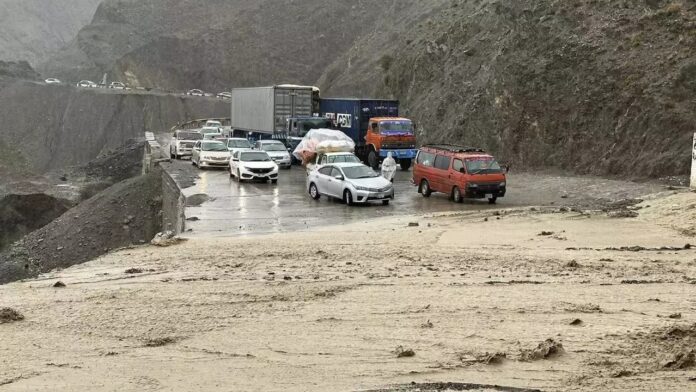- Country received 59.3 millimetres rainfall in April against usual average of 22.5 millimetres
ISLAMABAD: The “excessively above” the normal average rainfall made the outgoing month “wettest April since 1961”, as the country received more than twice the rain it usually experiences for the month, the Pakistan Meteorological Department (PMD) revealed in its monthly climate report.
The country’s weather agency said in the report that April rainfall was recorded at 59.3 millimetres, “excessively above” the normal average of 22.5 millimetres.
There were at least 144 deaths in thunderstorms and house collapses due to heavy rains in what the report said was the “wettest April since 1961”.
Pakistan is increasingly vulnerable to unpredictable weather, as well as often destructive monsoon rains that usually arrive in July.
A third of Pakistan was submerged by unprecedented monsoon rains that displaced millions of people in the summer of 2022 and cost the country $30 billion in damage and economic losses, according to a World Bank estimate.
“Climate change is a major factor that is influencing the erratic weather patterns in our region,” Zaheer Ahmad Babar, spokesperson for the Pakistan Meteorological Department, said of the report.
While much of Asia is sweltering due to heatwaves, Pakistan’s national monthly temperature for April was 23.67 degrees Celsius (74 degrees Fahrenheit), 0.87C lower than the average of 24.54C, the report said.
The highest rainfall was recorded in the southwestern province of Balochistan with 437 percent more than average.
The South Asian nation has the world’s fifth-largest population and is responsible for less than one percent of global greenhouse gas emissions, according to officials, but is highly vulnerable to extreme weather exacerbated by global warming.
The largest death toll was reported in northwestern Khyber Pakhtunkhwa, where 84 people died, including 38 children, and more than 3,500 homes were damaged.
The UN children’s agency UNICEF called last month for urgent action to save children on the frontlines of climate change.
“Children in Pakistan are at ‘extremely high risk’ of the impacts of the climate crisis,” it said in a statement.
“Despite significant aid efforts, 9.6 million children were still in need of humanitarian assistance in flood affected areas by December 2023,” it said.
In some areas of Punjab, the most populous province and the breadbasket of a country facing an economic crisis, heavy rains and hailstorms caused damage to the wheat harvest, a staple food source.
“The flash floods also caused extensive damage to vast area of crops, particularly the wheat crop, which was ready for harvest,” the UN humanitarian agency OCHA said in a recent report.
“This has resulted in significant economic losses for local farmers and communities, compounding the losses from the rain-related incidents,” it said.
Parts of Pakistan have also been hit by heatwaves and severe air pollution, which experts say are exacerbated by inadequate infrastructure and ineffective governance.






















